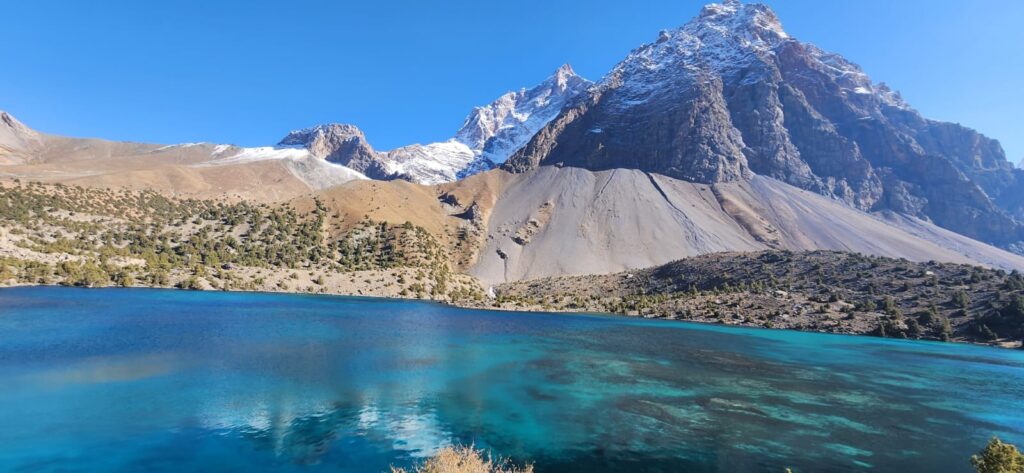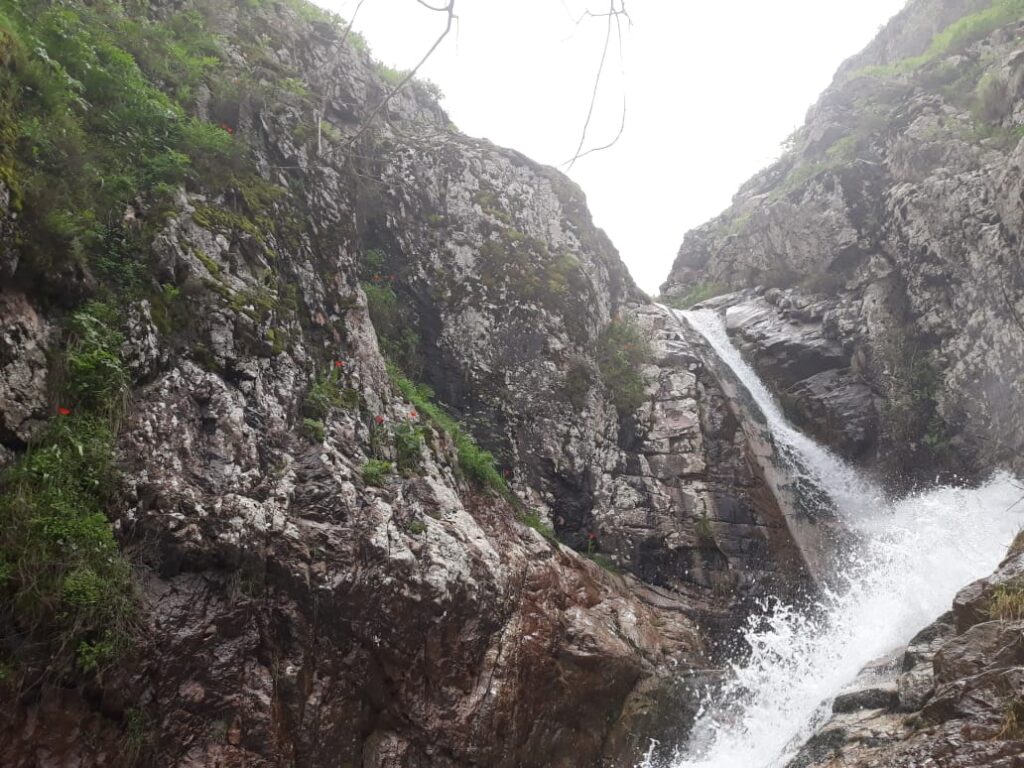The southern edges of Tajikistan stretch into color: ochre and lavender dusts, pale grasses, scattered shrubs, and an urge toward boundary. The terrain here is not full desert like the Sahara, but a semi-arid steppe pushed by climate, water limits, and human need. To walk across it is to sense land doing what land does: edging backward, becoming lean, present but exposed. In these southern steppes lies a living frontier, a zone of push and pull between survival, geography, and identity.
From Jirgatol to Panj, the steppe unfurls. In summer, heat ripples over soil crusts cracked by drought. In winter, a dusting of snow dusts it gray. Where water seeps from mountain foothills, reed patches grow; negligible rainfall elsewhere forces plants to root deeply or die. In many places the soil is fine loess or wind-blown silt, easily picked up in gusts. Local herders call it sarez, dust that rides winds and settles in faces and eyes.
Geographers call these lands ecotones, transitions, these are places of friction. They are where mountain meets desert, steppe meets stagnation. Yet the southern steppe is more than borderland. It is where pastoralists drive sheep in seasons, where camelthorn bushes harbor life, where saline soils and wadis converge in landscape logic. Understanding it is essential to seeing Tajikistan’s margins as dynamic, not simply empty.
Walking along a karez (ancient underground canal) in Khatlon, one sees its life as ghostly: dry stones trace old channels, now collapsed, threaded beneath fields. In past centuries, these karizes irrigated pockets of crops in the steppe fringes. Now many sit unused, broken or diverted. A village elder says: “That canal carried water when the land was alive. Now it is silent.” The silence is geographical as much as human.
The southern steppe is a terrain of impermanence. Land which in some years blooms with millet becomes dust in others. Erosion gulfs swallow field edges. Salt climbs upward in dry summers. It is a landscape always negotiating its own presence: alive but fragile, delimited by what little water arrives, and shaped by human attempts to draw life from it.
Mapping this frontier is a challenge. Satellite imagery reveals patches of vegetation, variations in tone, and bare soil interlaced. In 2005, an FAO land cover map classified much of the southern border zone as “desert and semi-desert,” with scattered agricultural patches tied to canals (FAO, 2005). But these classifications mask nuance: a courtyard garden here, a reed patch there, a fallow field awaiting moisture.
Much of the area is under-mapped. Topographic maps show contours and relief but rarely capture ephemeral wadis or saline flats. Field surveyors in the 1980s brought back floristic lists of steppe shrubs, noting species like Calligonum, Alhagi, and saltworts (Kamelin & Mikhailova, Soviet studies). These older botanical records help anchor modern mapping, linking pixels to life.
Climate puts pressure on this frontier. Rainfall is highly seasonal, unpredictable. In drought years, dust storms rise along old roads. In wet years, ephemeral lakes form then vanish under heat. Temperature extremes stress both plants and soil. As edges erode, the boundary between usable land and drift shifts inward.
Human geography is interlaced. Pastoralists still walk seasonal routes, driving sheep through steppe corridors during cold months, returning to river valleys in summer. Salt flats have salt grazers; medicinal herbs grow in sheltered micro-valleys and are gathered by people who know the land. Scattered hamlets rely on hand wells or small tube pumps. Farms exist only where soils are better and water reachable.
Modern pressures compress that space. New roads buildup, land sold to distant investors, small plots fenced off. Water tables recede as irrigation withdrawals upstream draw more. Layers of land tenure, migration, and remittance reshape land use. What was communal grazing becomes parcelled. What once was drift becomes claimed.
In one village near the Panj, a farmer digs a shallow pit in poor soil to plant barley. He says: “Maybe it grows. Sometimes it does.” That uncertainty is geography lived. He plants in the cracks, uses compost, pipes in small water, all in hope. The frontier is dynamic because people experiment.
But not all experiments succeed. Many patches fail. Salt kills sprouts. Fallow years accumulate. People abandon fringe plots and retreat to valley farms. Migration takes youth; elderly stay, their hands cracked. Some say the steppe is dying, others debate that it is evolving.
Yet the frontier holds symbolic meaning too. The steppe edge is Tajikistan’s margin and its reach. Maps of the nation often show mountains and rivers, but not the slowly receding sands. The steppe is background in national identity, though it witnesses struggle and adaptation.
When night falls, stars stretch overhead, clearer than in the cities. The horizon becomes a boundary of darkness and land. Silence reigns. In that silence, the steppe remembers every footfall, every gust, every rain that ever touched it. And in memory lies possibility.
References
- FAO. (2005). Land Cover Maps of Central Asia: Tajikistan. Rome: Food and Agriculture Organization.
- Kamelin, R. V., & Mikhailova, N. V. (Soviet era). Steppe flora survey of southern Tajikistan (archival reports).
- United Nations Development Programme (UNDP). (2009). Dryland Management in Central Asia: Strategies and Practices. Dushanbe: UNDP Tajikistan.








